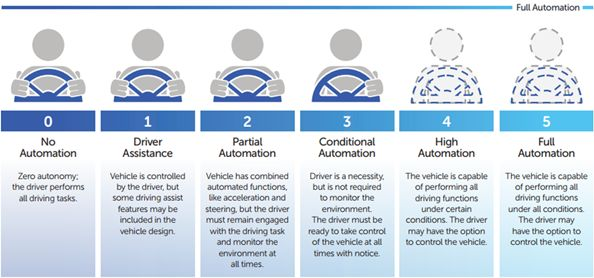Transportation Blueprint
- Authors



 [[File:|x100px|link=Tim Smith]]
[[File:|x100px|link=Tim Smith]]


 [[File:|x100px|link=Cory Marshall]]
[[File:|x100px|link=Cory Marshall]]

{{{summary}}}
Introduction
A SuperCluster is a multi-city, multi-stakeholder collaboration organized around common project objectives and shared solutions. Committed cities/communities and partners jointly tackle shared issues, develop and deploy shared solutions to create economies of scale.
The Transportation SuperCluster (TSC) was formed and is managed by forward looking municipalities interested in preparing their infrastructure for new technologies that look set to provide better, more equitable services at lower cost. The TSC mission is to:
- Explore opportunities provided by first and last mile vehicles including shared, low speed and autonomous.
- Examine opportunities for building vibrant communities around transfer points and mobility hubs.
- Clarify how vehicles and hubs can play a role in the last mile delivery of packages and other freight.
- Collaborate with diverse teams developing new and advanced transportation models and environmental sensors that allow both the prediction of probable outcomes and the measurement of actual outcomes of introducing these technologies.
- Work with teams implementing a smart CityWeb to ensure the portability and interchangeability of solutions
- Propose regulatory and policy changes that support the safe deployment of these technologies.
This blueprint will address the range of opportunities offered by new mobility-related technologies. We will provide data about the readiness of these technologies and how we believe they will influence city and community planning offering potential short and long term improvements in safety, equity, climate, employment and congestion.
We want to thank the National Institute of Standards and Technology (NIST) for their leadership in establishing the Global City Teams Challenge. By pulling together city, academic and industry leaders into action clusters and then combining synergistic action clusters into SuperClusters NIST has launched a wave of innovation that will bring lasting benefit to urban life in the US and abroad. In this blueprint we outline bold steps that can benefit mobility in our communities. We have focused on improving first and last mile connections for transit users and last fifty feet for freight delivery. We are interested in addressing transport issues between urban environments in a future version of the blueprint.
Pilot Programs for AV Technologies
In the last few years we have seen three significant shifts in urban mobility,
- sharing,
- electrification, and
- autonomy.
While this document is nominally focused on Autonomous Vehicles many of the desired community benefits can be gained by implementing first and last mile solutions with a shared electric fleet. Further, by running pilots of shared electric fleets that are autonomous ready or partially autonomous we will gain considerable insight into how to deploy autonomous vehicles when the technology is ready for full operation.
The first and last mile pilots are intended to lead cities to a future vision of urban mobility. These pilots will provide considerable learning and inform the pilots that follow.
The first and last mile transportation system should provide:
- Safe pedestrian pathways
- Safe cycling paths
- Urban Speed Vehicles (12mph), buses, cars and specialty vehicles and in this way
- Significantly reduce fatalities because of reduced speed
- Significantly reduced parking space requirements because of vehicle sharing
- Reduced rider cost because of autonomy
The team will start with simple demonstrations that evolve to more complex solutions as understanding is gained. A sample set of demonstrations to start the process could be:
Transit Station to Company Campus:
As an example of transit to company campus a number of large companies in the Portland area are served by TriMet stations that are somewhat distant from campus (such as Nike and Intel). This limits the use of transit unless the company supports a bus service to bridge the gap from transit station to campus (as is done by WeDriveU for Nike). We would propose this function be performed by a connected on demand electric bus transitioning to an autonomous bus which could transport employees from the transit station to the industrial campus and may also be used on campus to deliver passengers to selected buildings.
The scope of the pilot could include access badge readers and/or other systems such as facial recognition. This would assure all riders had appropriate access to campus. Unidentified passengers could be identified and connected to the company security officer for access or denial of access to campus.
Transit Station to College Campus:
Like the previous pilot but with lower identification requirements due to the open nature of campuses, a similar transit station to campus pilot can be started with an electric bus fleet that will evolve over time into an autonomous electric fleet. If successful, the technology could have direct use for many locations.
Transit Station to Public Place (e.g. shopping mall):
Unlike the more homogeneous employee and student pilots, a transit station to public place pilot is more like regular bus service and provides the opportunity to begin development of connected systems to assure passenger safety and reduce rider anxiety. Such topics as rider identification (including ID card, facial recognition technology, biometric ID, etc.) should be investigated. In-vehicle monitored cameras may be used.
Residence to Transit Station:
For this pilot we could use a bus or car. If the bus is relatively small and picks up only passengers in a local neighborhood they may feel safe. With a car which carries 2, 4, or 6 passengers and only collects passengers at one stop this issue is removed.
Electric Vehicle Charging Infrastructure
We plan to work with Forth Mobility on demonstration projects to advance electric, smart and shared transportation. We plan to work with Portland General Electric Company (PGE) and their efforts to accelerate transportation electrification.
Maintenance and System Operation
Urban Speed Electric Vehicles like Mobility Cubed’s World Bus are constructed with less than 300 major parts, compared to over 2,500 parts for a typical gasoline engine vehicle. In addition, these vehicle’s assembly techniques are significantly less complicated than typical gasoline engine vehicles. The small bill of materials coupled with streamlined assembly processes enable Mobility Cubed to deploy relatively small (5,000 unit) volume runs of vehicles. The vehicles can be assembled and maintained at facilities near their operation, thereby providing local jobs, supporting the local economy, reducing shipping and logistics costs.
Autonomous Driving Systems Technology
In the last few years, there has been a major shift in the outlook for autonomous vehicles, not just in the headlines, but with investment and a serious development effort from almost every player in the auto and industrial technology industries. It has become clear that a significant trend has now made its way into a full commitment from stakeholders. Predictions on the future size of the autonomous industry have ranged from the billions to the hundreds of billions of dollars. Contributing technologies such as sensors, navigation, location services and positioning software have all matured just enough to have autonomous vehicles reach road testing stage with success.
Autonomous vehicles are a key component of the “transportation as a service” vision of the future. Its advantages in providing greater safety, efficiency, cost-effectiveness and flexibility drive its development. It will be easier to provide more economically viable transportation solutions and products while being more sensitive to environmental concerns and complying with or exceeding existing environmental laws. In addition to those factors, its potential enabling of a large eco-system built around connected technologies to improve user experience, reduce congestion and environmental impact, build on lucrative software, media and infotainment market spaces contribute to the perfect storm of motivating drivers behind autonomous vehicles.
Urban areas wanting to transform into smart cities see the potential of urban speed electric transport as the energy-responsible, efficient and connected public transport vehicle of the future.
Not All Autonomous Vehicles Are Driverless
Although the term “Autonomous” has become synonymous with “driver-less”, it is only the last category, Level 5 Autonomous, that can do away with the driver altogether. As defined by the SAE International standard , adopted by the USDOT, there are six levels of Automation for Driving:
Autonomous operations are being developed for all vehicle form-factors from passenger vehicles to buses, shuttles, freight carriers, long-haul trucks, industrial equipment and cargo movers. They include high-speed as well as urban speed vehicles.
Most modern cars have some level of driver assistance such as sensor information, ABS brakes, collision detection, vehicle vicinity mapping, and even collision avoidance (the vehicle automatically brakes to avoid a collision without requiring the driver). Cruise control has been available on many cars and trucks for a long time. With a tremendous increase in the capabilities of the software stack
present in modern cars, greater automation and sophisticated control and monitoring are becoming easier and cheaper.
Fully Autonomous Capabilities - Open Road and Controlled Environments
Autonomous vehicles operating without a driver (Level 4 and Level 5) require at least the ability to determine the location of the vehicle, determine and follow a route to a destination, determine immediate obstacles and potential collisions in the vicinity of the vehicle and take steps to safely move forward or stop as needed. They also require the ability to navigate on open roads, follow routes, obey street signs and traffic signals, coexist with other vehicles on the road, perform operations such as turns and lane changes, and comply with all traffic laws. The level of redundancy, safety, performance and data handling required to deliver these capabilities means complex and software and advanced hardware and sensors. These technologies are still in the early stages of development and maturity.
When fully autonomous vehicles are operated in strictly controlled environments (Level 4) such as on special lanes and on private campuses the software and hardware required is simpler, cheaper and easier to test and produce. Manufacturers can use simpler location technologies and do not need the complexity and risk management of street navigation, with its high liability and complex performance requirements. Such use cases are more likely to be deployed much earlier than with full Level 5 autonomy.
Autonomous Vendors
There are several categories of providers of autonomous vehicles and components. At a high-level, we observe three distinct types of vendors:
- Full solution vendors: Vehicle + all the software and other hardware necessary (integrated solution).
- Autonomous software stack only: Vendors who provide an autonomous software stack to hardware (vehicle) manufacturers (these include closed, proprietary solution providers as well as open source solution providers).
- Component providers: Vendors who provide only autonomous components (whether software or hardware).
A survey of the industry shows that the above are made up of:
- Traditional auto manufacturers: Almost every automaker is performing research and development into autonomous vehicles, and is converting their current offerings into autonomous-capable versions. Most expect to have an autonomous vehicle on the road by 2020-2025.
- Traditional Suppliers: Quite a few have transitioned into providing or planning to provide autonomous versions of their components. These include hardware and software, ECU suppliers, by-wire programmable units such as by-wire-brake controllers, etc.
- Autonomous Software Suppliers: Companies who provide a full autonomous software solution to deploy on any vehicle (with certain hardware requirements).
- Autonomous Component Suppliers: New companies like Mobileye who are industry leaders in deploying sensors for localization and positioning, Quanergy, a LIDAR (Laser RADAR) supplier, etc.
Related industries and tech companies moving into the autonomous vehicle provider business: Companies such as Google, Uber, Lyft have entered the autonomous vehicle provider market. Ride-sharing companies like Uber and Lyft need such vehicles for their future fleet. Tech companies such as Google and Apple have entered the market because of their software skills. Google is road-testing their own autonomous vehicles while Apple has said they will be providing a full autonomous software solution to their partner manufacturer companies.
Two important points should be understood from this list:
- There are many options for deploying robust commercial last mile solutions today. These solutions can address city objectives on sustainability, safety and equity without any new innovations.
- Any legislation should recognize that these technologies exist and all efforts should be be made to deploy them rather than constructing legislation that would delay this deployment.
Now let's look at the promise of full autonomy, or National Highway Traffic Safety Administration (NHTSA) level 5 autonomy. NHTSA considers this to be complete driver replacement in all situations including off road. Many in the general public believe this technology is just around the corner. It is not. However, deployment in the urban environment with limited usage is possible today with legislative support.
Currently for ride services such as Uber and Lyft approximately 80% of the operating cost is for the driver. This cost puts these services out of reach of many low income families. For first mile last mile solution to be equitable we must reduce the cost per ride. We believe Level 4 autonomous (driverless) operation in controlled environments will meet the needs of first mile last mile transit without the risk, time and cost required to develop level 5.
We intend to conduct trials of these technologies to assess readiness for addressing selected sustainable, vision zero and equity goals and intends to conduct a set of trials in districts that introduce the public to these vehicles and learn how people respond.

